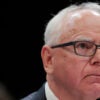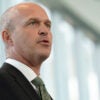Today, the House Transportation and Infrastructure Committee released a scathing report that deconstructed the Transportation Security Administration’s (TSA) claims regarding the Screening Partnership Program (SPP).
The SPP, created under the Aviation and Transportation Security Act of 2001, grants airports the ability to opt out of using federal screeners and instead rely on private screeners to perform security functions.
TSA back in January cancelled expansion of the SPP and declined to approve any more applications for airports seeking to privatize. TSA Administrator John Pistole stated that he did “not see any clear or substantial advantage” in expanding the program further.
It is doubtful that most Americans would agree. Frustration over TSA’s approach to security is at an all-time high. From wholesale screening of travelers—forcing Americans to choose between a full body scan or a pat-down—to stopping programs that actually provide better customer service, TSA’s aviation security strategy is highly suspect.
The committee’s report makes a pretty compelling case to say that privatization of screening functions makes absolute sense. Here a few of the highlights:
- The SPP saves taxpayer dollars. In fact, the report cited a screening cost of $4.22 per passenger for a federal screening workforce, as opposed to only $2.42 per passenger for private screeners. Furthermore, the report indicated that “taxpayers would save more than $38.6 million a year if LAX [for example] joined the SPP,” which would reduce personnel by 867 people.
- Private screeners are more efficient. The committee emphasized that private screeners were 65 percent more efficient than an all-federal screening force. In fact, they are so efficient that “taxpayers would save $1 billion over five years if the Nation’s top 35 airports operated as efficiently as SFO [San Francisco International Airport—a private screening force airport] does under the SPP model.”
- Federal screeners are very costly. In fact, TSA cost estimates—which claim that private screeners are more expensive than federal screeners—have often failed to account for the cost of hiring and attrition that has come with managing an overly bureaucratic federal workforce. With attrition levels at 13.8 percent at LAX (a federal workforce airport)—it is easy to rack up the costs of constantly finding new employees. In fact, TSA has often resorted to using a “National Deployment Force”—a group of people paid with taxpayer dollars to run around the country and fill gaps in the screening force when necessary. These run a huge price tag in terms of in hotels, per diem, and other costs.
- More flexibility and better morale means better customer service. At a bare minimum, the flexibility, efficiency, and better morale of private screeners will translate into better customer service—making plane travel a lot less annoying for travelers.
- The SPP maintains security. SPP airports are still under TSA oversight, meaning they have to meet the same standards as federal-screener-run airports.
TSA, for its part, has made a very half-hearted justification for why SPP should not continue. The government has claimed that the SPP is more expensive—yet it never included training costs or the deployment of the National Deployment Force. TSA also never studied how efficient the screeners performed.
Unfortunately, the motives behind this decision were embarrassingly transparent when TSA moved shortly thereafter to engage in limited collective bargaining for federal screeners.
Efforts to placate labor unions shouldn’t form the basis of security policy. As committee chairman John Mica (R–FL) stated, “TSA needs to get out of the personnel business and get in the security business.”































20 Replies to “TSA Gets A Pat-Down on Screener Privatization”